Abstract
The effect that ratio schedules of reinforcement had upon variability of responding was investigated in college students. Subjects were paid $0.02 contingent upon completion of eight presses, distributed in any combination across two push buttons; 256 different sequences were possible. Sequence emission was reinforced according to fixed- and variable-ratio schedules. Ratio requirements of 1, 2, 4 and 8 were presented in alternate components of a multiple schedule. The variability engendered by variable-ratio schedules was also compared to that engendered by fixed ratios. Variability increased with ratio size, irrespective of whether the schedule requirement was fixed or variable. The data demonstrate the similarity between the determinants of human and nonhuman variability, and they illustrate the role of ratio size in determining variability in operant behavior.
Full text
PDF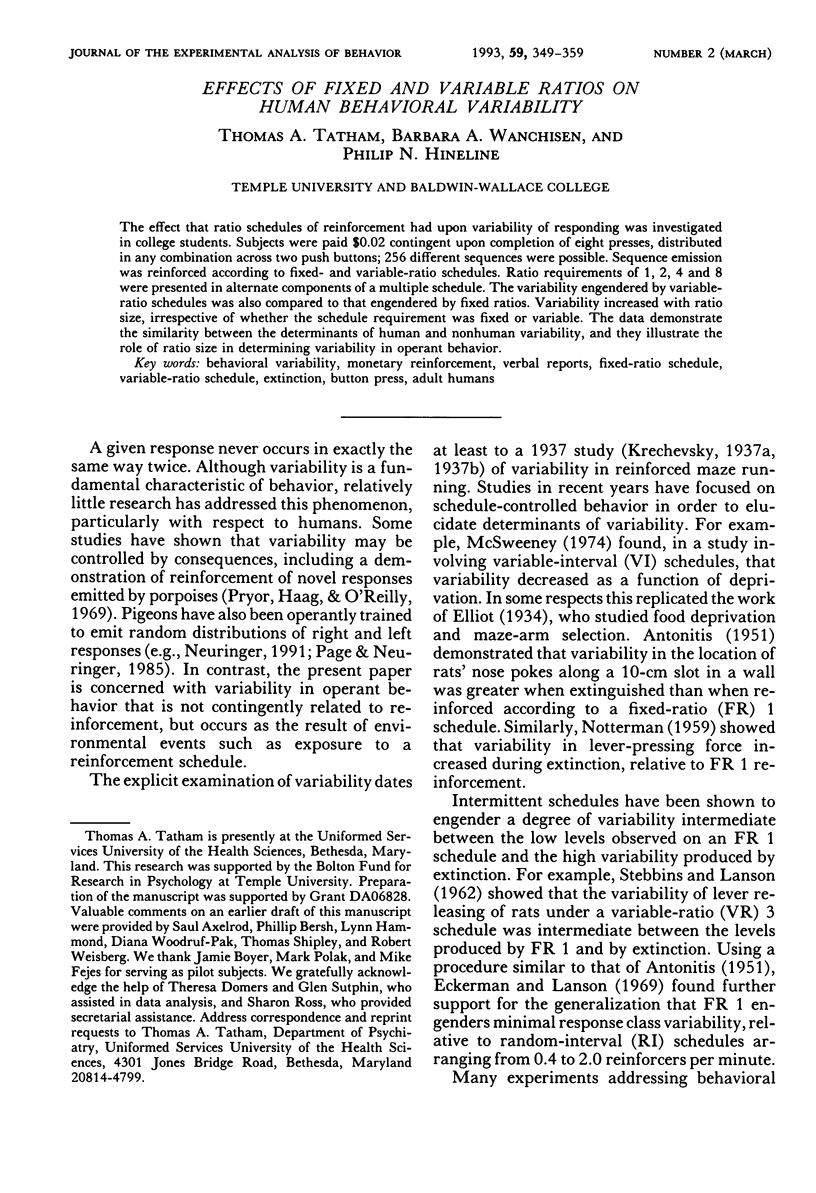
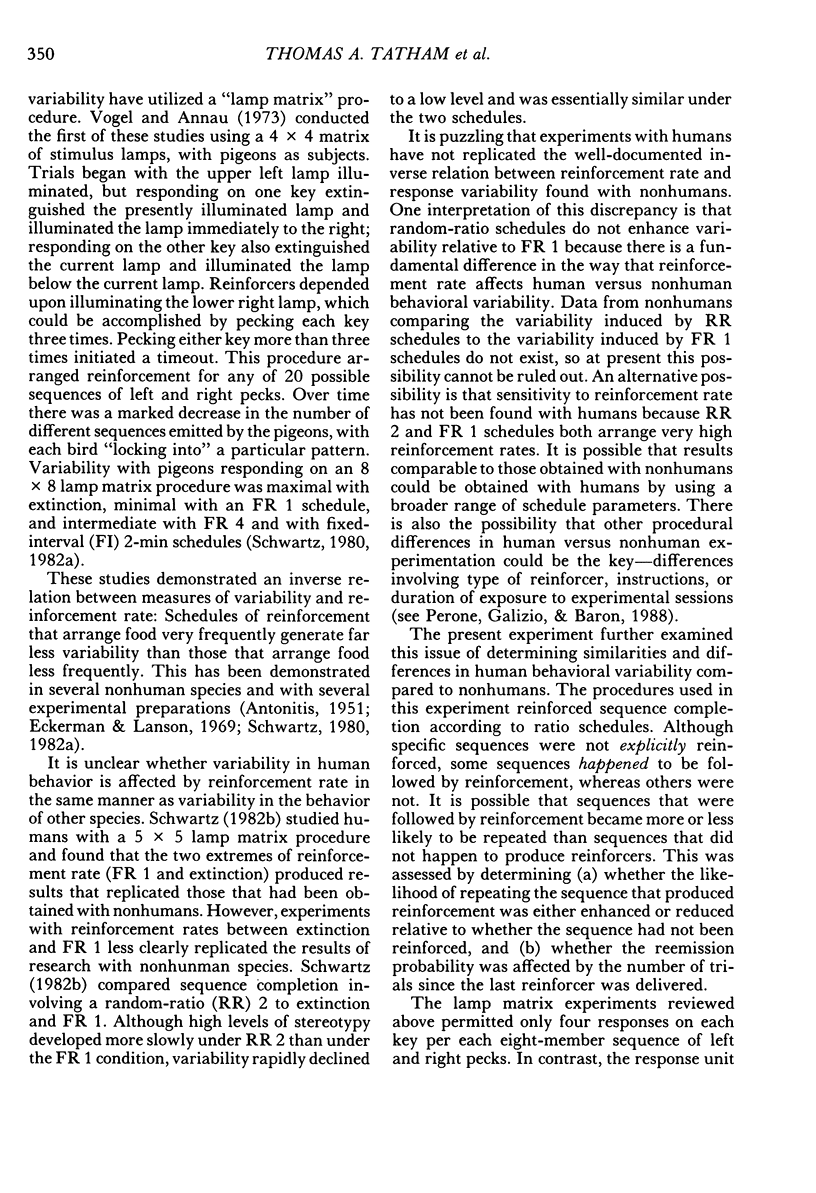

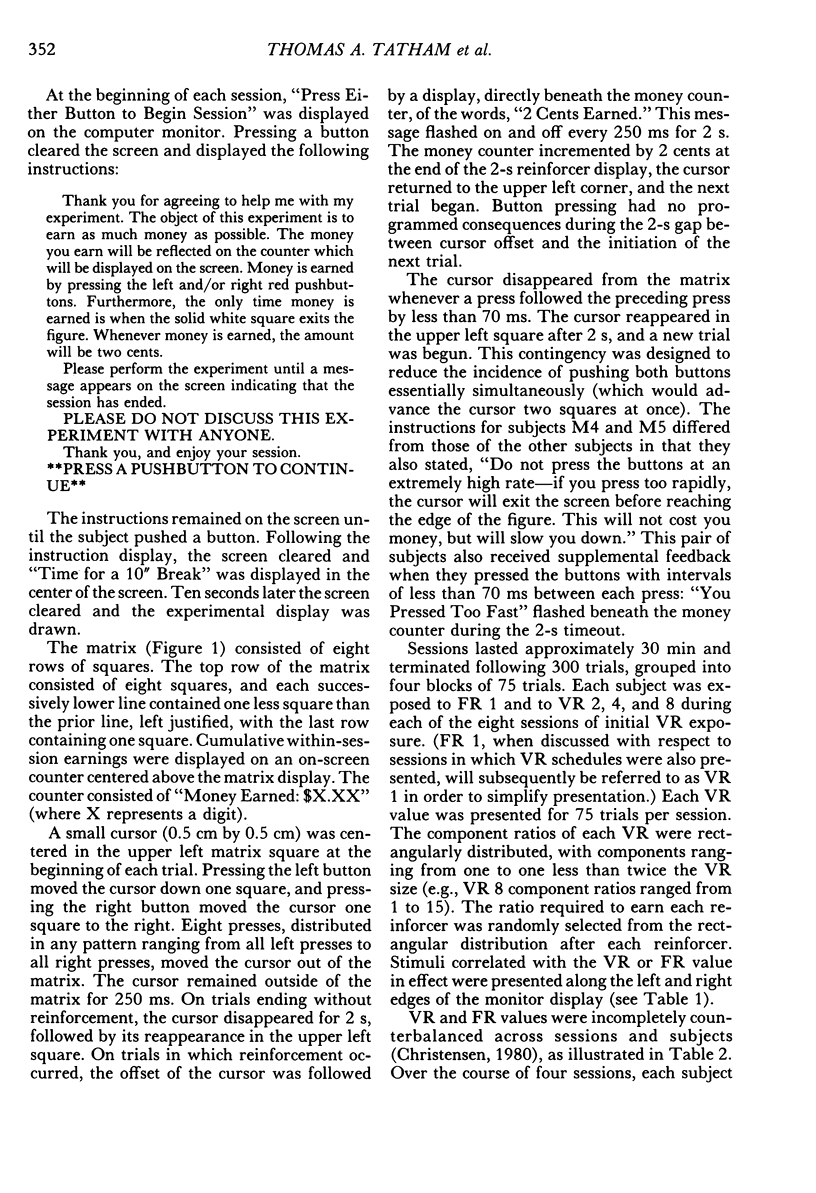
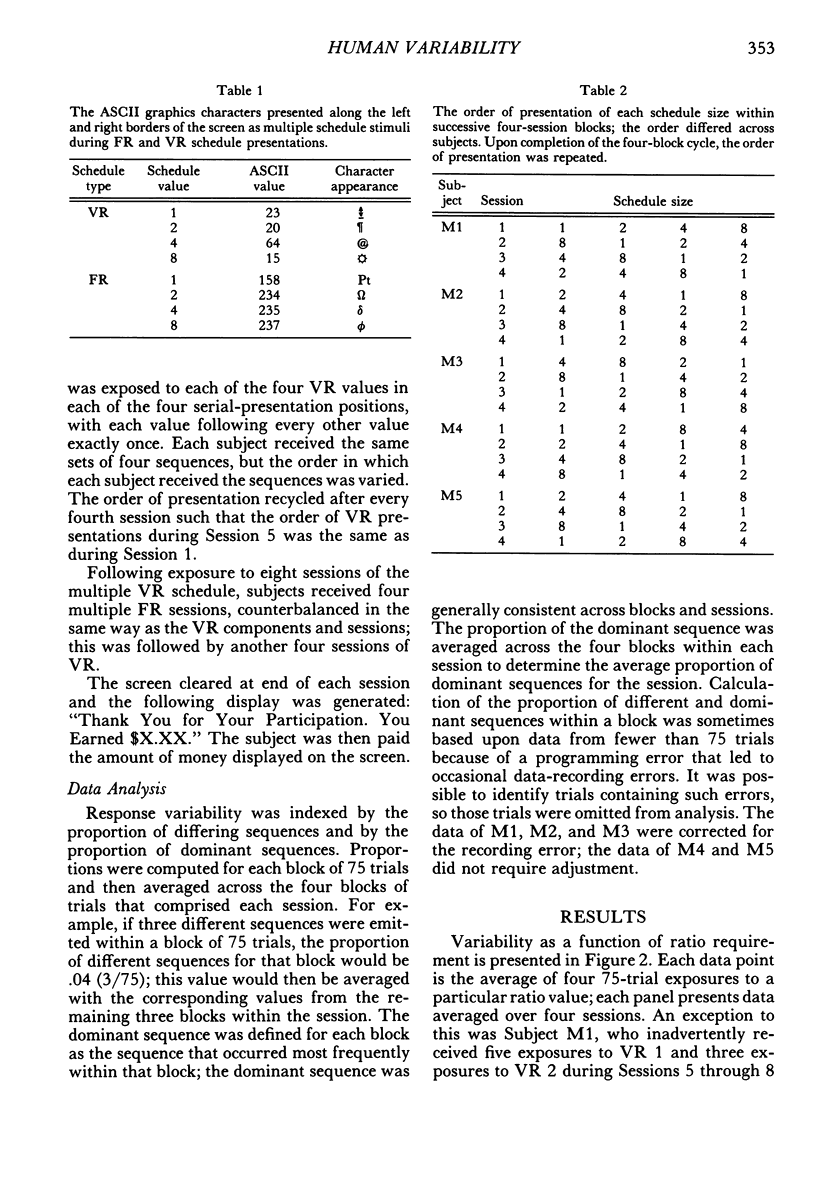


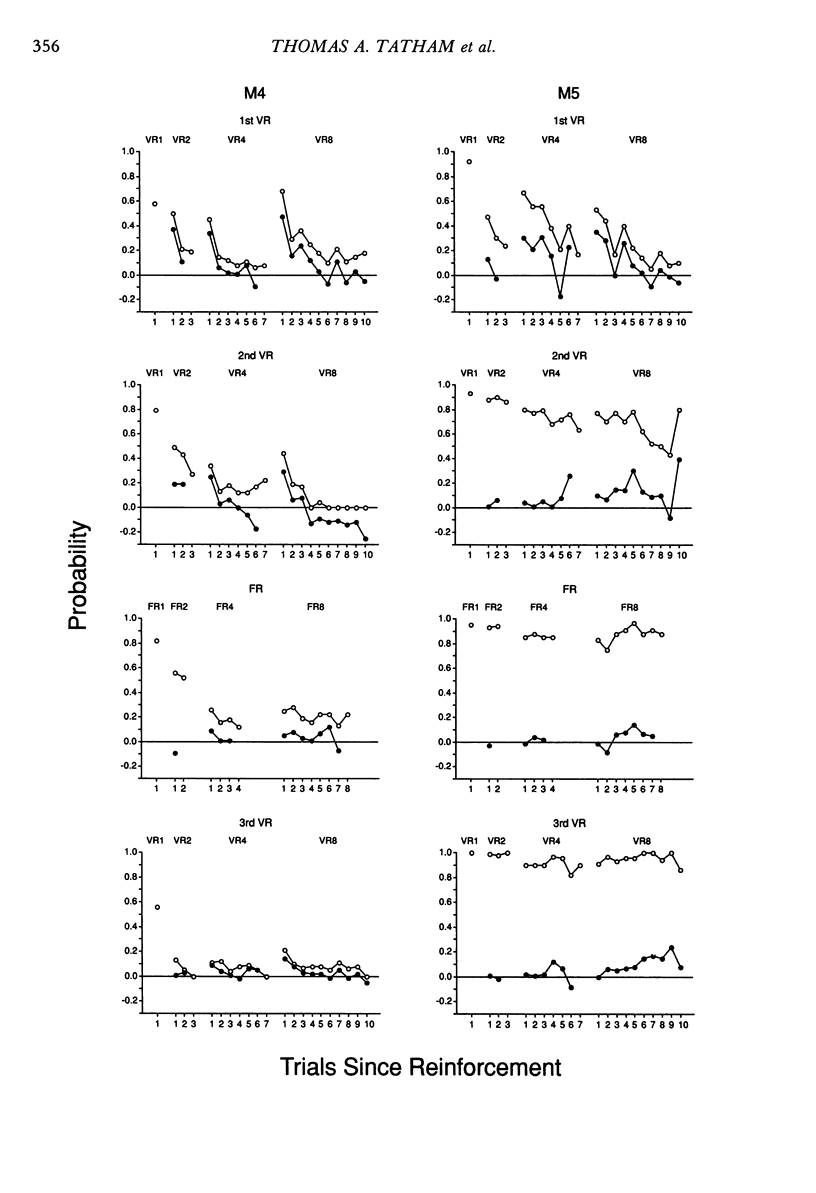
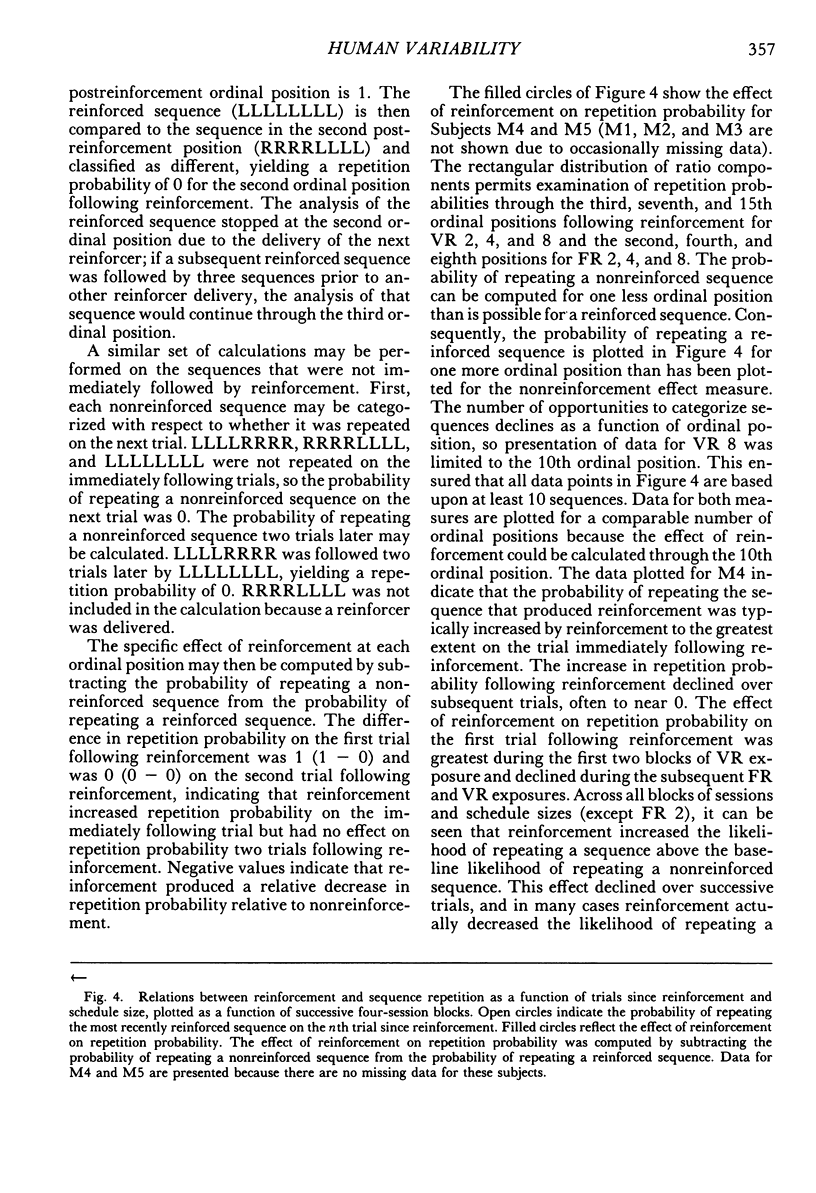

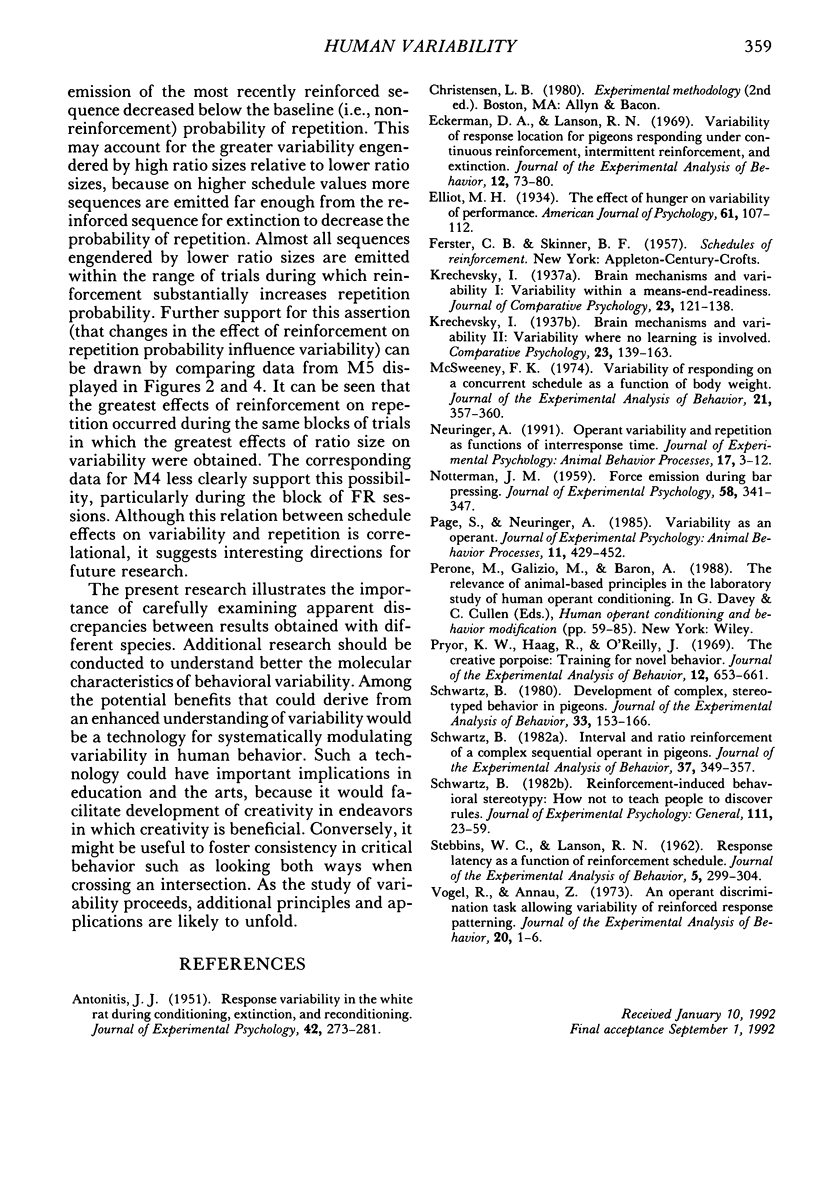
Selected References
These references are in PubMed. This may not be the complete list of references from this article.
- ANTONITIS J. J. Response variability in the white rat during conditioning, extinction, and reconditioning. J Exp Psychol. 1951 Oct;42(4):273–281. doi: 10.1037/h0060407. [DOI] [PubMed] [Google Scholar]
- Eckerman D. A., Lanson R. N. Variability of response location for pigeons responding under continuous reinforcement, intermittent reinforcement, and extinction. J Exp Anal Behav. 1969 Jan;12(1):73–80. doi: 10.1901/jeab.1969.12-73. [DOI] [PMC free article] [PubMed] [Google Scholar]
- McSweeney F. K. Variability of responding on a concurrent schedule as a function of body weight. J Exp Anal Behav. 1974 Mar;21(2):357–359. doi: 10.1901/jeab.1974.21-357. [DOI] [PMC free article] [PubMed] [Google Scholar]
- NOTTERMAN J. M. Force emission during bar pressing. J Exp Psychol. 1959 Nov;58:341–347. doi: 10.1037/h0042801. [DOI] [PubMed] [Google Scholar]
- Pryor K. W., Haag R., O'reilly J. The creative porpoise: training for novel behavior. J Exp Anal Behav. 1969 Jul;12(4):653–661. doi: 10.1901/jeab.1969.12-653. [DOI] [PMC free article] [PubMed] [Google Scholar]
- STEBBINS W. C., LANSON R. N. Response latency as a function of reinforcement schedule. J Exp Anal Behav. 1962 Jul;5:299–304. doi: 10.1901/jeab.1962.5-299. [DOI] [PMC free article] [PubMed] [Google Scholar]
- Schwartz B. Development of complex, stereotyped behavior in pigeons. J Exp Anal Behav. 1980 Mar;33(2):153–166. doi: 10.1901/jeab.1980.33-153. [DOI] [PMC free article] [PubMed] [Google Scholar]
- Schwartz B. Interval and ratio reinforcement of a complex sequential operant in pigeons. J Exp Anal Behav. 1982 May;37(3):349–357. doi: 10.1901/jeab.1982.37-349. [DOI] [PMC free article] [PubMed] [Google Scholar]
- Vogel R., Annau Z. An operant discrimination task allowing variability of reinforced response patterning. J Exp Anal Behav. 1973 Jul;20(1):1–6. doi: 10.1901/jeab.1973.20-1. [DOI] [PMC free article] [PubMed] [Google Scholar]


